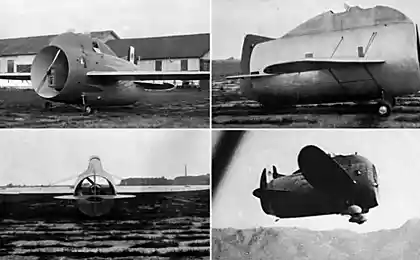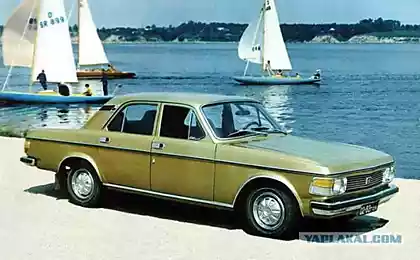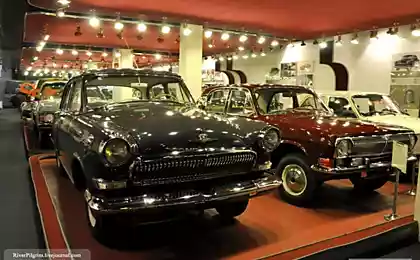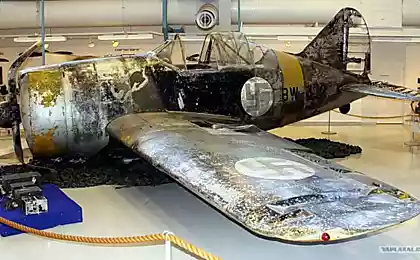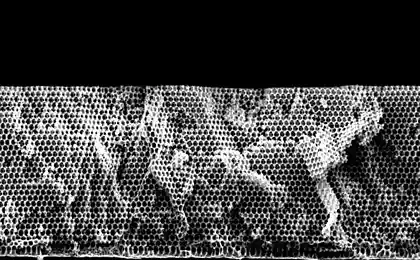380
In Russia project electroanalyt
A year later, the Ministry of industry and trade plans to present to the public a few options of aircraft that utilize renewable sources of energy.

Environmentally friendly aircraft will use the alternate liquid and gas fuel and electricity. It will help to point the Climatic doctrine of Russia, dedicated to the development of measures to limit emissions of greenhouse gases in civil aviation. The implementation of this project is allocated 200 million roubles.
"A decline of the use of hydrocarbon fuels and the accompanying emission of pollutants can be achieved through the introduction of aircraft alternative fuels (including synthetic fuels) derived from biomass, oil and natural gas, and hydrogen. These fuels have a comparative or lower than that of kerosene, indices of carbon dioxide emissions or are carbon-neutral (their use does not increase the concentration of CO2 in the atmosphere), — told the experts of the Ministry of industry and trade. — Significant contribution to the reduction of emissions of greenhouse gases in the Earth's atmosphere can be expected from the wide use of onboard aircraft electrical energy.
Quite successful, but, unfortunately, not become a serial experience of creating "ecological" aircraft from Russia was in the late 80-ies of the last century. The world was presented to the Tu-155 (experimental model of the Tu-154), liquefied hydrogen, and then to liquefied natural gas. April 15, 1988 the aircraft was first flown in the sky. The aircraft set 14 world records and performed about a hundred flights. But then the project went "on the shelf". In the late 1990s at the request of "Gazprom" was built Tu-156 with engines using liquefied petroleum gas and traditional aviation kerosene. This aircraft suffered the same fate as the Tu-155".Now, the development of electric aircraft does United aircraft Corporation (UAC) and the Russian Academy of Sciences.
P. S. And remember, only by changing their consumption — together we change the world! ©
Source: green-city.su/v-rossii-proektiruyut-elektrosamolyot/

Environmentally friendly aircraft will use the alternate liquid and gas fuel and electricity. It will help to point the Climatic doctrine of Russia, dedicated to the development of measures to limit emissions of greenhouse gases in civil aviation. The implementation of this project is allocated 200 million roubles.
"A decline of the use of hydrocarbon fuels and the accompanying emission of pollutants can be achieved through the introduction of aircraft alternative fuels (including synthetic fuels) derived from biomass, oil and natural gas, and hydrogen. These fuels have a comparative or lower than that of kerosene, indices of carbon dioxide emissions or are carbon-neutral (their use does not increase the concentration of CO2 in the atmosphere), — told the experts of the Ministry of industry and trade. — Significant contribution to the reduction of emissions of greenhouse gases in the Earth's atmosphere can be expected from the wide use of onboard aircraft electrical energy.

Quite successful, but, unfortunately, not become a serial experience of creating "ecological" aircraft from Russia was in the late 80-ies of the last century. The world was presented to the Tu-155 (experimental model of the Tu-154), liquefied hydrogen, and then to liquefied natural gas. April 15, 1988 the aircraft was first flown in the sky. The aircraft set 14 world records and performed about a hundred flights. But then the project went "on the shelf". In the late 1990s at the request of "Gazprom" was built Tu-156 with engines using liquefied petroleum gas and traditional aviation kerosene. This aircraft suffered the same fate as the Tu-155".Now, the development of electric aircraft does United aircraft Corporation (UAC) and the Russian Academy of Sciences.
P. S. And remember, only by changing their consumption — together we change the world! ©
Source: green-city.su/v-rossii-proektiruyut-elektrosamolyot/
Floating robot cleaner and the cheapest device for cleaning the ocean
By the end of 2016 the number of vehicles with an electric motor will exceed 2 million
